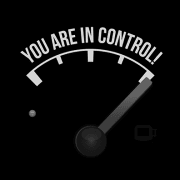Project Managers — Get Control of Your Costs
There is only one way to effectively control your project costs and that’s to routinely compare what you’re spending versus what you’ve budgeted for each item of work in progress.
This comparison is the only way for a project manager to identify and correct underperforming areas before they can snowball and become project-delaying, costly issues. Once problem areas are identified, project managers can focus on bringing performance back on track. Without a level of cost control, underperformance will only be discovered after the project is complete and when it is too late to make adjustments to prevent overruns.
What to Measure?
Every project manager should regularly measure the cost of labor, equipment and material. Labor is the most likely to fall out of control due to varying construction techniques or site conditions. Inefficient building methods or unexpected obstacles can single-handedly cause poor output and destroy your project’s profitability.
Now consider how you’re measuring labor. To their detriment, some contractors prefer to compare the cost of labor to budgeted labor costs. With this method, the cost of labor and burden varies over geographical locations leading to potentially inaccurate numbers. Instead, consider analyzing the labor hours actually expended (using weekly labor reports) next to labor hours budgeted. Now you have an accurate means of comparison that is more widely applicable. Potential overruns are more readily identified, providing the most efficient means of controlling labor.
Next, how is your equipment performing? Equipment costs are typically tracked on an hourly basis. Comparing actual equipment hours consumed to the hours budgeted provides the best real-time control. A word of caution! Pay close attention to internal equipment costs versus the cost of operating rental equipment. You just might find it is less expensive to rent versus own. If that is the case, it’s likely time to get rid of that old, worn out equipment.
Finally, material costs can be measured in the field on a consumption basis. In this case, comparison of units consumed versus units budgeted is the most favorable method. Using more materials than planned can often be an indication of waste and a warning that there has been poor planning or execution of the work. For this reason, materials must be tracked based on usage, and continually compared to the budget.
Accuracy Equals Profits
Project managers play an integral role in delivering a successful and profitable project by accurately and regularly tracking project labor, equipment and material costs. Make sure the appropriate mechanisms are in place to facilitate quick and accurate comparison of the actual usage of labor, material and equipment to that which is budgeted. Attaining maximum control over costs is the only way to maximize your profit-making ability!


